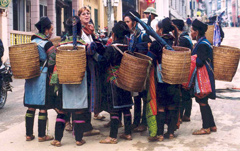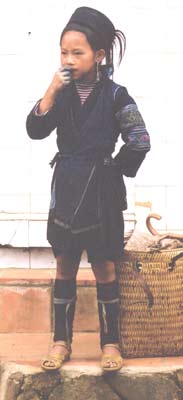The H'mong are the eighth largest ethnic minority in Vietnam with a total population of just under 600,000. Belonging to the Sino-Tibetan and specifically the H'mong-Dao language group, they settled widely over northern Vietnam but most densely along the Lao and Chinese borders. Like the Dao the H'mong build their houses on the ground rather than stilts. The H'mong are famous for their embroidery and also batik which is in evidence on the wide variety of costumes of the various branches. Each H'mong branch has certain characteristics but equally there is a huge variety in clothes of say the White H'mong in one district to another.


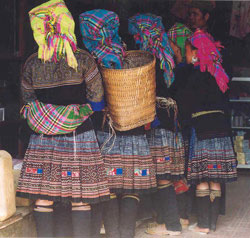 The ladies above are from a branch of the Flower H'mong living in Yen Bai province. They were photographed in a shop in Than Uyen |
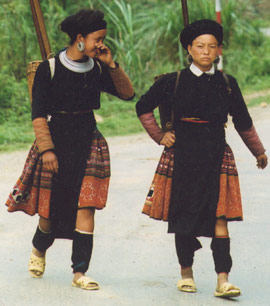 The Photo above shows the typical embroidered/batik patterns of another local branch of the colourful Flower H'mong. These girls are from Moc Chau |
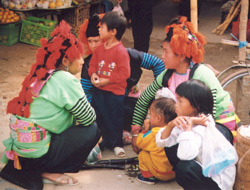
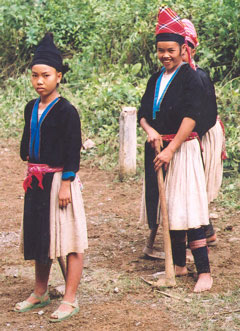
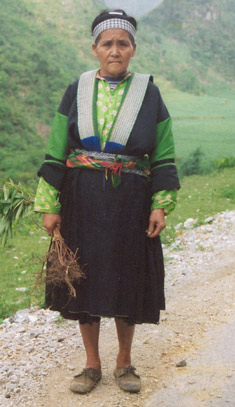
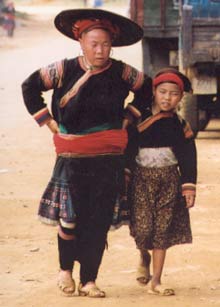
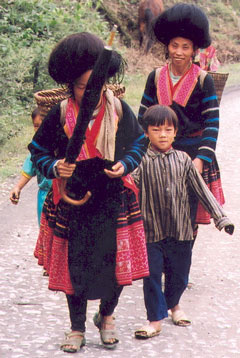
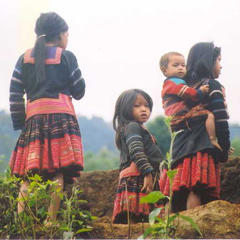
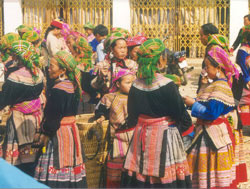
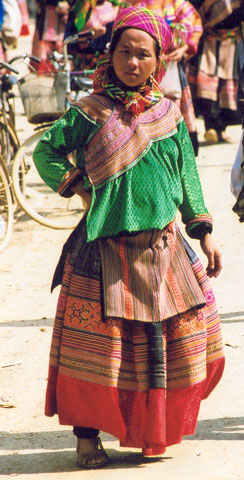
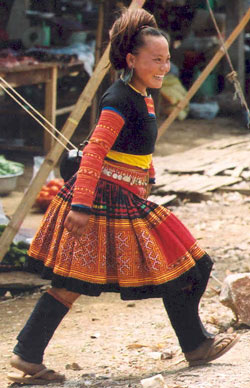 I believe this is another Flower H'mong lady (above) photographed in Phu Yen in Yen Bai province. Notice also she has false hair similar to that worn by Red H'mong ladies of Lai Chau.
I believe this is another Flower H'mong lady (above) photographed in Phu Yen in Yen Bai province. Notice also she has false hair similar to that worn by Red H'mong ladies of Lai Chau.